Asus ROG Ally: Where to buy, specs & performance
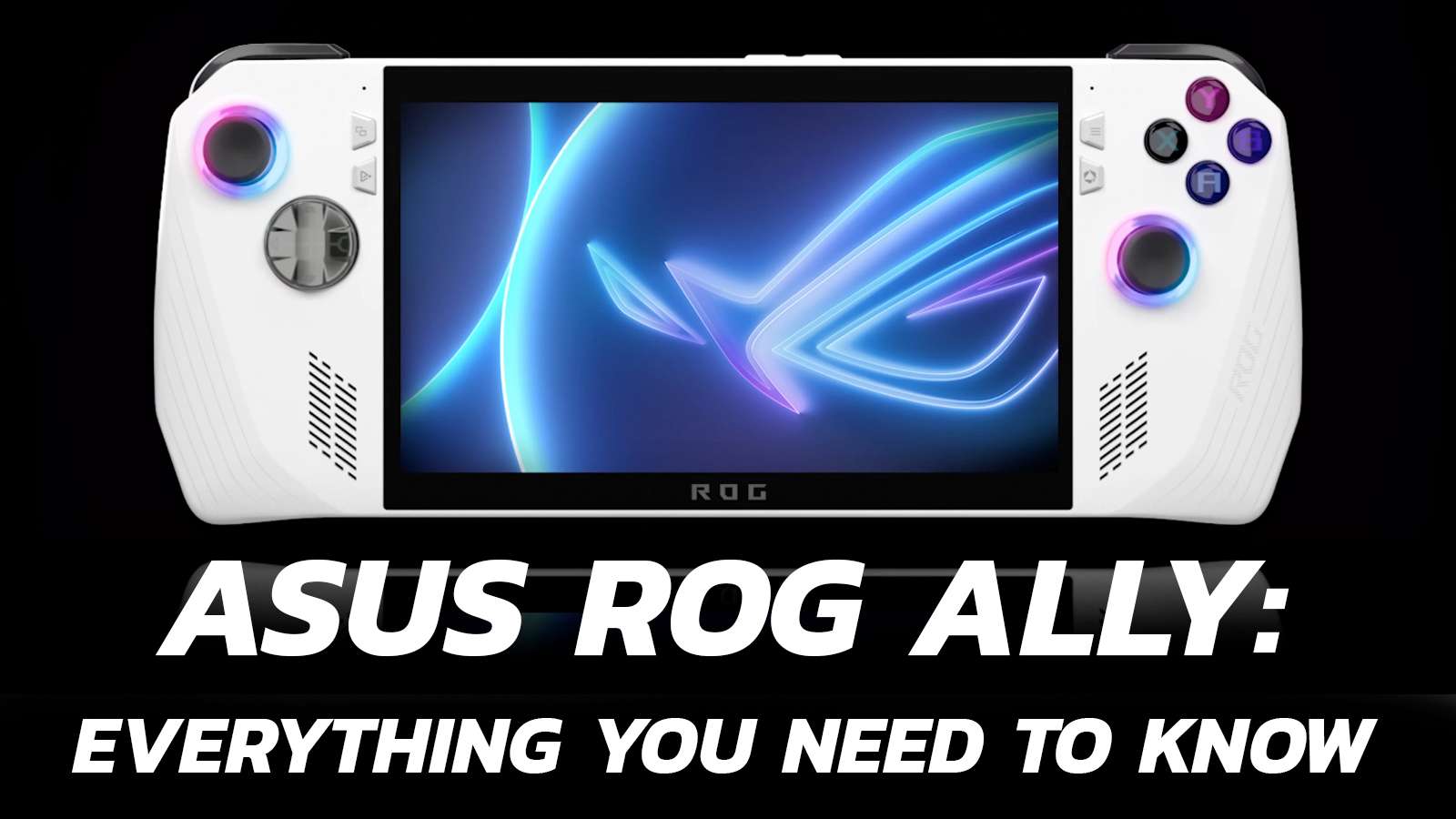
Looking to buy the Asus ROG Ally? Fret not. We’ve got essential details like ROG Ally price, specifications, features, performance, and more.
Inspired by the success of Nintendo Switch, Valve’s Steam Deck, and other handheld gaming consoles, Asus finally debuted its first-ever portable console ROG Ally to the international markets.
This Windows-powered gaming console is a powerful portable computer that can run most AAA games without breaking a sweat.Getting into the handheld market was an obvious choice for Asus. After all, the Taiwanese tech brand already has a bunch of gaming-focused peripherals in its repertoire.
Powering the base variant ROG Ally is a powerful AMD Ryzen Z1 chip. At the same time, the pricier version has a more powerful Ryzen Z1 Extreme under the hood. The ROG Ally runs on somewhat familiar Windows 11 out of the box.
Though the ROG Ally has a design similar to what we’ve seen on most Ayaneo gaming handhelds, it has some extra tricks up its sleeves.
Let’s dive deep into details like ROG Ally’s price, features, specs, and performance of this new gaming gadget. You can read our full review to discover what we thought of this new handheld beast. We were impressed by its performance, but is raw power the real draw to a handheld?
Where to buy the Asus ROG Ally
The Asus ROG Ally goes up for pre-order on May 11 and hits store shelves on June 13. In the US, the device appears to be limited to purchase at Best Buy as of right now.
The retailer has a waitlist, with those who signed up expected to get alerts for when pre-orders open. However, we believe the waitlist page will be converted into the store listing.
Asus ROG Ally price
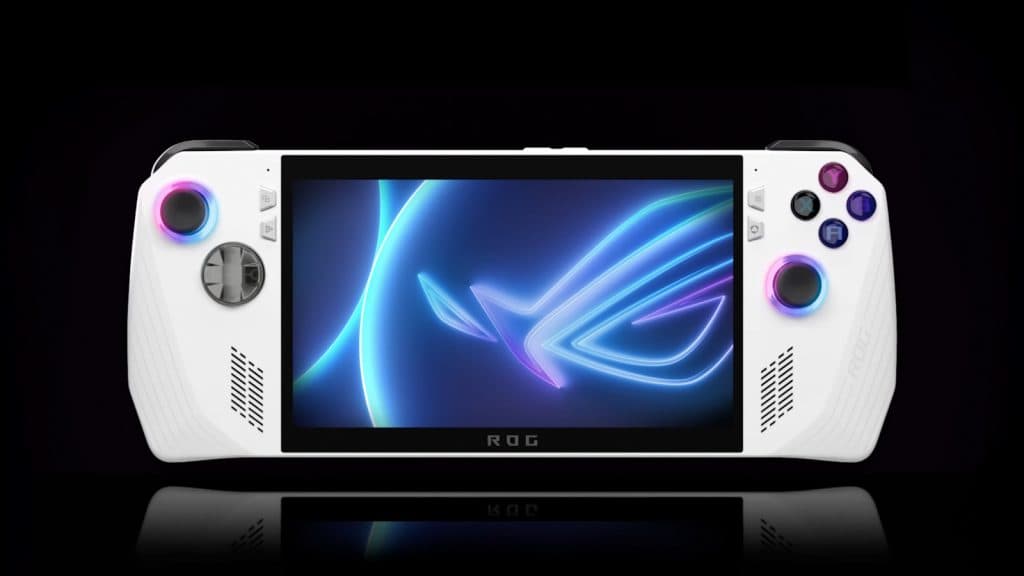
The Asus ROG Ally will be priced starting from just $599. This will be for the 256GB model, which sports a plain-jane Ryzen Z1 processor. There will also be a more expensive $699 model, which sports 512GB of storage, and the faster Ryzen Z1 Extreme processor. This pricing is confirmed and was leaked via an early listing over on Best Buy.
Looking at the circumstances of the Steam Deck’s pricing, and the various competitors struggling to compete, it’s likely that Asus wanted to avoid being priced higher than Valve, in order to make a consumer-friendly competitor.
The low cost of the Steam Deck was subsidized by Valve’s cash and the hope that sales of software would help recuperate the investment. Meanwhile, the much more expensive competition gave us a better indication of the price of ROG’s Ally, but it appears that Asus is keen to make a dent in the market.
While devices like the Ayaneo 2, GPD Win 4, and others sport much better specs than the Steam Deck, this causes them to be costly. The Ayaneo 2 is around $400 more than the top-end Steam Deck.
Also, the small premium tacked onto the price tag due to the inclusion of Windows 11. Microsoft, despite wanting as many users on the platform as possible, will still charge manufacturers for the licenses. However, if the current rumor is to be believed, then the Asus ROG Ally could be one of the most competitive Windows handhelds ever created.
Asus ROG Ally release date
The Asus ROG Ally will be launched on June 13, with pre-orders and a global launch event to accompany it on May 11.
According to ASUS, and reported via Linus Tech Tips, the ASUS ROG Ally was teased to be launched in Summer 2023. This is a fairly speedy rollout and appears to be mostly worldwide.
Asus has further reiterated this through a tweet made in mid-April, claiming that the handheld will be released sooner than you might think. Interestingly, it also clarified that the device will be launched globally, and it will not be a region-specific release.
Asus ROG Ally specifications
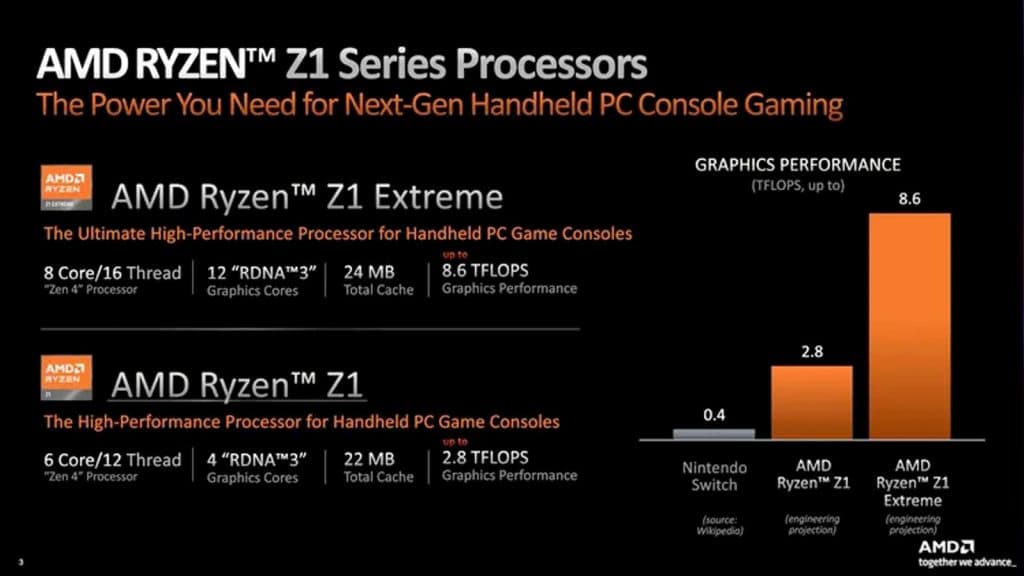
| Specs | Asus ROG Ally |
|---|---|
| APU | AMD Ryzen Z1 / Z1 Extreme |
| Process | 4nm |
| CPU architecture | AMD Zen 4 |
| Cores | Threads | 6 | 12 / 8 | 16 |
| GPU architecture | AMD RDNA 3 |
| GPU clock speed | 2.8GHz |
| RAM | 16GB LPDDR5 |
| Storage | 256GV NVMe SSD / 512GB NVMe SSD (PCIe 4) |
| Display | 7-inch screen |
| Native resolution | 1920 x 1080 |
| Refresh rate | 120Hz |
| Audio | Dual speakers with Dolby Atmos |
| Connectivity | Wi-Fi, Bluetooth, USB-C, custom Asus PCIe port |
| Weight | 608g |
The Asus ROG Ally will be using a newly released Z1 processor from AMD. The APU is considerably more powerful than its competitors, especially the Ayaneo 2. Two flavors of the Z1 will be launched, a “standard” configuration for the cheaper model of the ROG Ally, and a more expensive Z1 Extreme variant, which is said to be slightly faster.
Recent leaks suggested the Z1 chip would be comparable to or based on the Zen 4 7840U processor with Radeon 780M graphics.
Interestingly, ASUS confirmed that there will be no Thunderbolt 4 support for the ASUS ROG Ally, in a statement given to Linus Tech Tips. Instead, the company will focus on its own proprietary solution in the ASUS ROG XG, an external graphics unit.
Valve currently powers the Steam Deck with another custom AMD APU – Van Gogh – a chip that combines both GPU and CPU into one. These are often designed for mobile devices, but in recent years, AMD’s APUs have proven to be exceptionally powerful for what they are. We recently tested the Ayaneo 2’s 6800U, which is incredibly powerful, and you can expect the ROG Ally to be a step up from that.
ROG XG eGPU
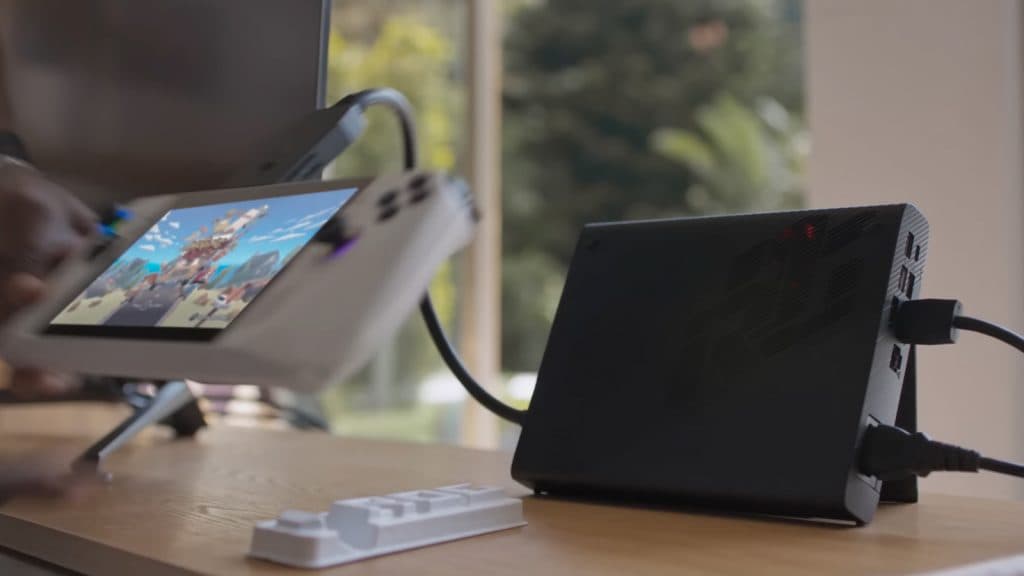
In the trailer, the device is hooked up to a docking station. This is powered by Asus’ ROG external GPU hub, which is currently available for its tablet hybrid. The latest version features an RTX 4090, and multiple other connection options (USB-A, HDMI, etc.), and is priced at $1999.
Asus’ ROG XG Mobile requires a custom PCIe connection too, meaning it can’t be used outside of certain devices. On top of this, the 4090 inside will be a similar cutdown version found in certain laptops. Nvidia’s RTX 40-series for laptops might feature the same branding, but the performance might be closer to a 4080 on desktop than the 4090 itself.
Screen
The screen is a 16:9, 1080p panel with a 120Hz refresh rate. It can be reduced to 60Hz, and 720p for battery conservation and performance increases.
Fan noise
Dave2D, a popular tech YouTuber, showed off how loud the ROG Ally can get. The comparison between it and the Steam Deck saw Asus shave off a whopping 17 decibels when compared to the Steam Deck’s fan.
There’s a dual-chamber heatsink, with two fans, two large intakes at the back, with exhausts at the top.
The cooling pulls air in the back, and out the top, with the gaps designed to prevent overheating with extra airflow. This should give it an edge over other devices, which use single-fan solutions, instead.
AMD Z1 performance
Of course, being a mobile device, the APU will be a “cut-down” version of the full device it is based on. This means, while it will feature RDNA3, it’s not operating at the same power as the devices inside Ryzen 7000 laptops.
Some prior speculation and investigations have concluded that the ROG Ally could end up landing between a 7640HS or 7840HS chip found in some of the upcoming laptops from AMD’s partners.
ASUS ROG Ally performance

With the onboard power of the ROG Ally looking to be a jump over the Steam Deck, we’re expecting to see a lot of games perform better. It’d also be a fool’s expectation to think the device could play most modern games higher than medium settings while on the go.
Linus Tech Tips has stated that the console will offer 50% better performance at 15W than the Steam Deck, with double the performance while operating at 35W.
The Steam Deck currently manages around a locked 30FPS to 40FPS for things like Resident Evil 4 Remake, but the RDNA3-backed APU could potentially squeeze out to a variable framerate of 40-60 very easily at 1080p, medium settings.
Of course, being yet another mobile AMD device, a lot of its performance is reliant on supersampling.
In new slides released by AMD, we can actually see how the Z1 chip performs on its own. Remember, this is with AMD’s testing and not through the ROG Ally itself, which could see some draw backs regarding power.
However, AMD is confident to include huge titles like GTAV and Shadow of the Tomb Raider, all being played on low settings and at 1080 via Supersampling.
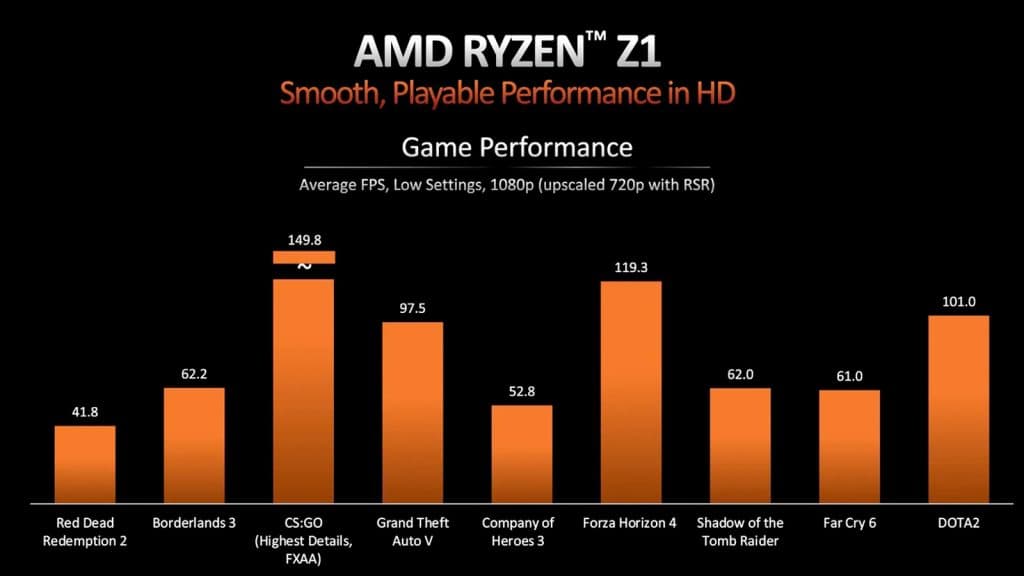
In games like Spider-Man: Miles Morales on PC, we found that AMD’s supersampling options were bested by Intel’s XeSS. FSR and FSR 2.0, AMD’s options, have consistently been under criticism from us at Dexerto due to the muddying of the image on the screen.
However, regardless of how things look, the Asus ROG Ally will be heavily reliant on FSR and other supersampling options to maintain performance across the board.
Battery life is a massive concern on these portable PCs, and the Steam Deck, even while using FSR, can sometimes only last a maximum of a couple of hours before needing to be charged.
With much better hardware onboard, the ROG Ally might be a victim of its power levels.
Asus ROG Ally benchmarks
In our own testing, we managed to get the following results:
Forza Horizon 5
| Forza Horizon 5 | Low Preset (MSAA/Turbo/120Hz/1080p) | Low Preset (MSAA/Turbo/120Hz/1080p) | Low Preset (FSR/Turbo/60Hz/1080p) | Ultra Preset (FSR/Turbo/60Hz/1080p) |
|---|---|---|---|---|
| FPS | 74 | 48 | 60 | 36 |
Path of Exile
| Path of Exile | High (Turbo/1080p/120Hz) | High (Turbo/1080p/60Hz) | High (Performance/1080p/60Hz) | Medium (Performance/1080p/60Hz) |
|---|---|---|---|---|
| FPS | 89 | 60 | 54 | 60 |
Resident Evil 4 Remake
| Resident Evil 4 | Low (Turbo/720p/120Hz/FSR) | Low (Turbo/1080p/60Hz/FSR) | Low (Performance/720p/60Hz) | Low (Performance/1080p/120Hz/FSR) | Medium (Turbo/1080p/120Hz) |
|---|---|---|---|---|---|
| FPS | 69 | 60 | 59 | 57.5 | 25 |
Cyberpunk 2077
| Cyberpunk 2077 | Medium (Turbo/1080p/120Hz) | Steam Deck (Turbo/1080p/120Hz) | High (Turbo/720p/120Hz) | Medium (Turbo/720p/120Hz) | Medium (Performance/720p/60Hz) | Low (Performance/720p/60Hz) |
|---|---|---|---|---|---|---|
| FPS | 49 | 47 | 54 | 56 | 35 | 36 |
Asus ROG Ally synthetic benchmarks
| Benchmark | Time Spy | Time Spy Extreme | Speed Way |
|---|---|---|---|
| Turbo | 3114 | 1481 | 412 |
If you click on a product link on this page we may earn a small affiliate commission.